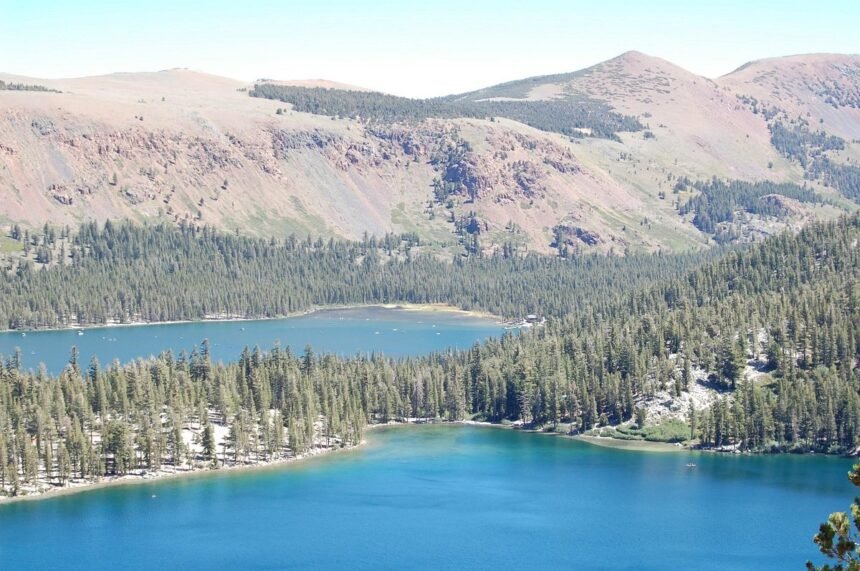Introduction
Crystal Lake is a name that evokes clear water, lakeside trees, and small-town charm. It’s also a popular place-name found across the United States and around the world used for actual lakes, towns, and neighborhoods. This article explains what people usually mean by “Crystal Lake,” how these places are alike and different, and what makes any Crystal Lake worth visiting, protecting, and learning about.
What “Crystal Lake” usually refers to
When someone says Crystal Lake they may mean:
- A natural lake with clear water and scenic shores.
- A small town or village built near a lake called Crystal Lake.
- A neighborhood, park, or resort named after a local Crystal Lake.
Common features across many places named Crystal Lake include waterfront recreation, abundant wildlife, and communities that grew up around the water for fishing, milling, or tourism.
Geography and natural features
Most Crystal Lakes are modest in size from small, spring-fed kettle lakes to larger glacial or reservoir lakes. Typical natural features include:
- Clear or moderately clear water, often fed by springs, streams, or groundwater.
- Shallow to moderate depth near the shore, with deeper basins farther out.
- Vegetation zones: emergent plants (cattails, reeds), submerged plants (pondweed), and wooded shorelines (maple, oak, pine).
- Habitat for fish (bass, trout, bluegill), waterfowl (ducks, herons), and amphibians.
Because many Crystal Lakes are in temperate climates, they experience seasonal cycles: ice and snow in winter, wildflowers in spring, swimming and boating in summer, and vibrant foliage in autumn.
History and human use
Historically, many lakes called Crystal Lake became focal points for settlement because of:
- Freshwater supply for drinking and agriculture.
- Fish and wild game for food.
- Water power for mills and small industry.
- Scenic value for early tourism and summer cottages.
Over time, shorelines were often developed with houses, cabins, boathouses, and public parks. Conservation efforts sometimes followed as communities realized the importance of protecting water quality and preserving habitat.
Recreation and attractions
Crystal Lakes are popular for a range of activities:
- Swimming and sunbathing at public beaches or private coves.
- Boating and kayaking — calm water is ideal for paddling and small motorboats.
- Fishing for species like bass, trout, and panfish.
- Hiking and birdwatching along lakeside trails.
- Winter sports in colder climates: ice fishing, skating, snowshoeing.
Many Crystal Lakes are family-friendly and host community events such as summer concerts, fishing derbies, or holiday fireworks.
Ecology and conservation
Lakes are delicate ecosystems. Common environmental concerns for Crystal Lakes include:
- Nutrient runoff (from lawns, farms, septic systems) that can cause algae blooms.
- Invasive species (zebra mussels, Eurasian watermilfoil) that harm native plants and fish.
- Shoreline erosion from waves, boat wakes, and development.
- Pollution and litter, which degrade water quality and wildlife habitat.
Local lake associations, municipal governments, and volunteers often work together on water testing, shoreline restoration, invasive species monitoring, and responsible boating rules. Simple homeowner steps reducing fertilizer use, maintaining septic systems, and planting native shoreline plants make a big difference.
Safety and etiquette
When visiting any Crystal Lake, follow these common-sense rules:
- Observe posted rules about swimming, boating, and fishing.
- Wear a life jacket when on a boat or paddlecraft.
- Keep dogs on a leash where required and clean up after pets.
- Respect private property use public access points.
- Avoid launching boats or trailers that may spread invasive species; clean and drain watercraft.
- Never swim alone and be cautious of sudden drop-offs and underwater hazards.
Tips for visitors
- Check whether the Crystal Lake you plan to visit has a public beach, boat launch, or picnic areas amenities vary.
- If fishing, verify local licensing and catch rules.
- Visit early morning or weekday afternoons for quieter experiences.
- Support local businesses: lakeside cafes, bait shops, and family-owned inns often rely on seasonal visitors.
- If you enjoy photography or birding, bring binoculars and a zoom lens lakeshore wildlife is often active at dawn and dusk.
Why Crystal Lakes matter
Lakes named Crystal Lake are more than pretty places they provide drinking water, habitat, recreational opportunities, and community identity. They also act as natural classrooms where people learn about ecosystems, conservation, and how human actions affect freshwater resources.
Conclusion
Whether you picture a particular town called Crystal Lake or a shimmering body of water tucked in a forest, places with this name share a common appeal: natural beauty, outdoor fun, and local community. Treat any Crystal Lake with respect enjoying its recreation while helping preserve its water quality and wildlife ensures that future visitors can enjoy the same clear, peaceful experience.







